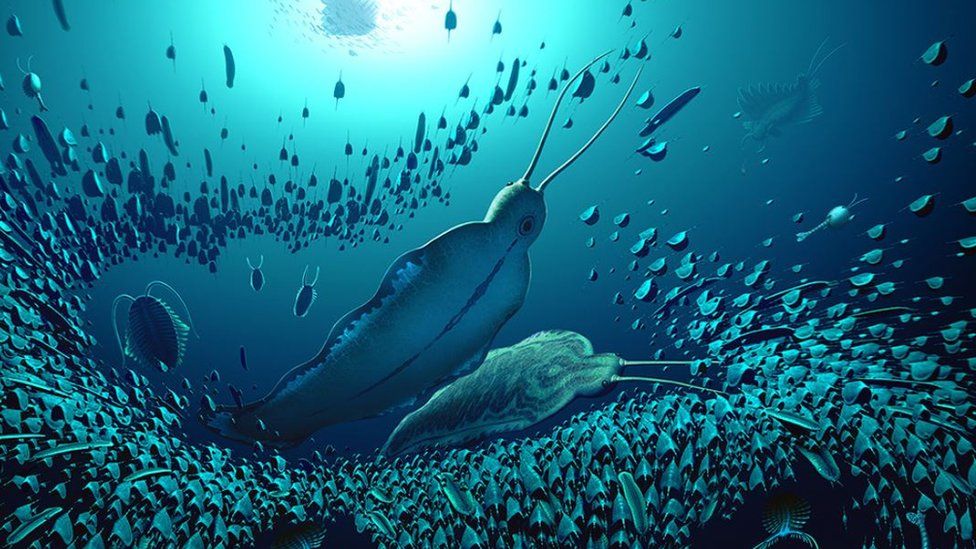Timorebestia: Fossil of 'terror beast' sea worm discovered in Greenland
- Published
- comments

Artists's impression of how the prehistoric worm called Timorebestia might have looked
Scientists have discovered evidence of a new group of extinct predators - which have been nicknamed 'terror beasts' worms.
Fossil remains of these ancient creatures, called Timorebestia, were discovered on the island of Greenland, located in the North Atlantic Ocean.
It's thought the sea worms dominated the oceans more than 500 million years ago.
Growing to around 30cm in length, the Timorebestia had a distinct head with long antennae and massive jaw structures inside its mouth, as well as fins on the sides of its body.
What did scientists discover?
Fossil remains of these worms were discovered by scientists in North Greenland
Researchers from the University of Bristol discovered fossils of the previously unknown species during expeditions in North Greenland.
The new ancient worms have been named Timorebestia, meaning 'terror beasts' in Latin.
Dr Jakob Vinther from the University of Bristol, who was involved with the study explained: "Timorebestia were giants of their day and would have been close to the top of the food chain.
That makes it equivalent in importance to some of the top carnivores in modern oceans, such as sharks and seals back in the Cambrian period."
The worms are thought to have been some of the largest swimming animals, when they roamed the seas more than 518 million years ago.
Scientists think that the creatures were around for "about 10 to 15 million years before they got superseded by other, and more successful, groups."
Experts say they are "very excited" to have unearthed "such unique predators" and hope their discovery will help show how the earliest animal ecosystems looked like and evolved.
